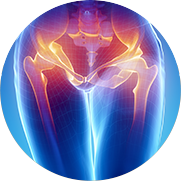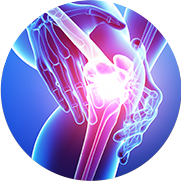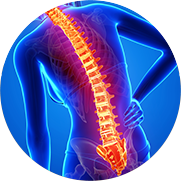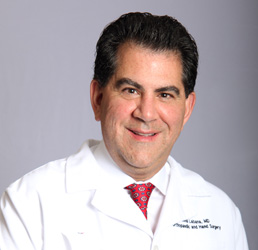What is a fracture?
The hand is made up of many bones that form its supporting framework. This frame acts as a point of attachment for the muscles that make the wrist and fingers move. A fracture occurs when enough force is applied to a bone to break it. When this happens, there is pain, swelling, and decreased use of the injured part. Many people think that a fracture is different from a break, but they are the same. Fractures may be simple with the bone pieces aligned and stable. Other fractures are unstable and the bone fragments tend to displace or shift. Some fractures occur in the shaft (main body) of the bone, others break the joint surface. Comminuted fractures (bone is shattered into many pieces) usually occur from a high energy force and are often unstable. An open (compound) fracture occurs when a bone fragment breaks through the skin. There is some risk of infection with compound fractures.
How does a fracture affect the hand?
Fractures often take place in the hand. A fracture may cause pain, stiffness, and loss of movement. Some fractures will cause an obvious deformity, such as a crooked finger, but many fractures do not. Because of the close relationship of bones to ligaments and tendons, the hand may be stiff and weak after the fracture heals. Fractures that injure joint surfaces may lead to early arthritis in those joints.
How are hand fractures treated?
Medical evaluation and x-rays are usually needed so that your doctor can tell if there is a fracture and to help determine the treatment. Depending upon the type of fracture, your hand surgeon may recommend one of several treatment methods.
A splint or cast may be used to treat a fracture that is not displaced, or to protect a fracture that has been set. Some displaced fractures may need to be set and then held in place with wires or pins without making an incision. This is called closed reduction and internal fixation.
Other fractures may need surgery to set the bone (open reduction). Once the bone fragments are set, they are held together with pins, plates, or screws. Fractures that disrupt the joint surface (articular fractures) usually need to be set more precisely to restore the joint surface as smooth as possible. On occasion, bone may be missing or be so severely crushed that it cannot be repaired. In such cases, a bone graft may be necessary. In this procedure, bone is taken from another part of the body to help provide more stability. Sometimes bone graft substitutes may be used instead of taking bone from another part of the body.
Fractures that have been set may be held in place by an “external fixator,” a set of metal bars outside the body attached to pins which are placed in the bone above and below the fracture site, in effect keeping it in traction until the bone heals.
Once the fracture has enough stability, motion exercises may be started to try to avoid stiffness. Your hand surgeon can determine when the fracture is sufficiently stable.
What types of results can I expect from surgery for hand fractures?
Perfect alignment of the bone on x-ray is not always necessary to get good function. A bony lump may appear at the fracture site as the bone heals and is known as a “fracture callus.” This functions as a “spot weld.” This is a normal healing process and the lump usually gets smaller over time. Problems with fracture healing include stiffness, shift in position, infection, slow healing, or complete failure to heal. Smoking has been shown to slow fracture healing. Fractures in children occasionally affect future growth of that bone (see the brochure/web page on Fractures in Children). You can lessen the chances of complication by carefully following your hand surgeon’s advice during the healing process and before returning to work or sports activities. A hand therapy program with splints and exercises may be recommended by your physician to speed and improve the recovery process.
© 2006 American Society for Surgery of the Hand. Developed by the ASSH Public Education Committee











